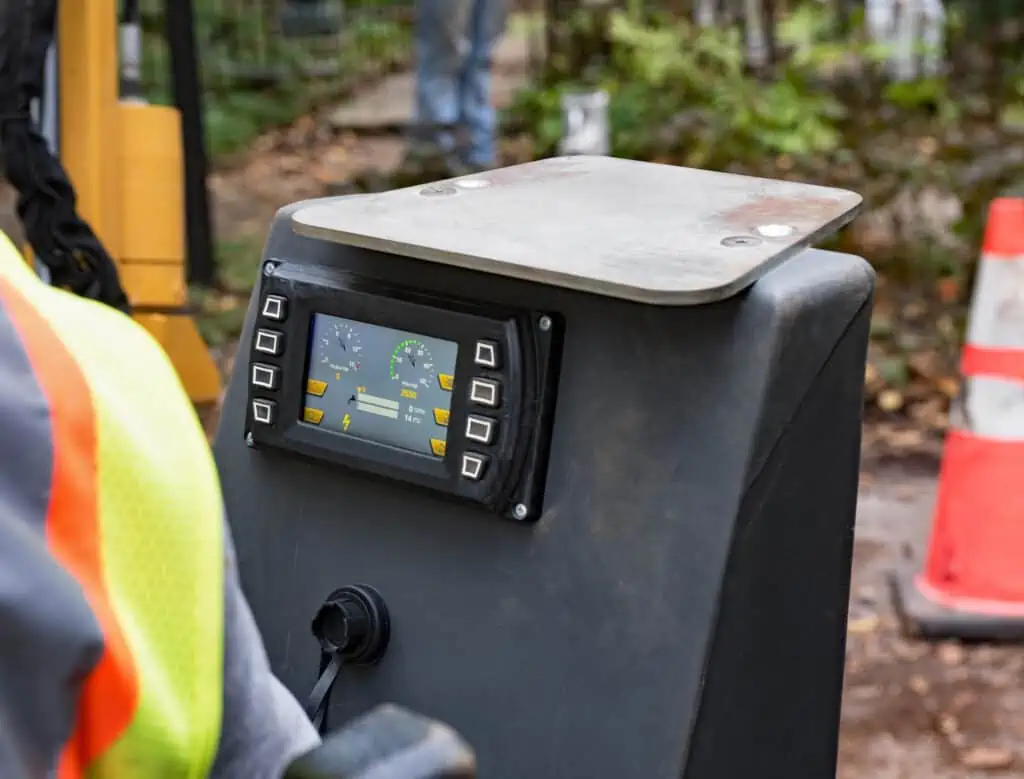Ask a Plumber: How Does Trenchless Sewer Repair Work?
If you have a problem with your sewer pipes, you may dread the idea of digging up your yard or driveway to fix them.
Not only is this process time-consuming and disruptive, but it can also be very expensive and damaging to your property. Fortunately, there’s a better way to repair sewer pipes without digging: trenchless sewer repair.
Trenchless sewer repair is a modern solution that uses advanced technologies to fix pipes from the inside without needing to excavate them.
Reliable Plumbing Expertise
Why can you trust us? Our plumbing team has serviced one of the rainiest areas in all of North America for decades. Not only have we performed countless sewer line repairs, we’ve seen what works, what doesn’t, and how the most popular methods, like trenchless repairs, have evolved over the years.
The Stages of A Trenchless Sewer Line Repair
From beginning to end, there are six steps to a typical trenchless sewer line repair.
- Inspection
A specialized drain and sewer camera inspection is done to assess the problem and determine the best way to resolve it. - Cleaning
The sewer line is cleaned using hydro jetting or other methods to remove any debris or blockages. - Lining & Curing OR Pipe Bursting
Depending on the method of trenchless repair being used, the underground pipe will be lined in resin and then cured or an entirely new pipe will be pulled through (see the next section for details on the different types of trenchless repairs) - Inspection
A final inspection is done to ensure that the new pipe has been installed correctly. - Reinstatement
Any detached connections are reinstalled and any holes dug up are filled in so that there are no safety hazards. - Final inspection
A final inspection is done to ensure that everything is working correctly.
Types of Trenchless Sewer Repair
There are two main types of trenchless sewer repair: pipe bursting and pipe lining.
Both methods require only a small access hole to reach the damaged pipe, and both can be completed in a matter of hours.
Pipe Bursting
Pipe bursting is a technique that involves breaking apart the old pipe and pulling a new pipe through it at the same time.
A special machine called a bursting head is attached to a steel cable and inserted into the old pipe. The bursting head has blades that cut through the old pipe as it moves along, while a new pipe of equal or greater diameter is pulled behind it.
This way, the old pipe is replaced with a new one in one continuous operation.
Pipe Lining
Pipe lining is a technique that involves creating a new pipe inside the old one using an epoxy resin.
A flexible tube coated with resin is inserted into the old pipe and inflated with air or water. The resin hardens and forms a new pipe that adheres to the old one, sealing any cracks or holes. The new pipe is slightly smaller than the old one, but this does not affect the flow capacity.
Which Method Is Better?
Both pipe bursting and pipe lining are effective ways to repair sewer pipes without digging, but they have different advantages and disadvantages depending on the situation.
Based on our 50+ years of working on sewer lines for homes and businesses around Vancouver, the most factors to consider when choosing between trenchless methods are:
- The condition and size of the old pipe
- The location and accessibility of the pipe
- The soil type and groundwater level
- The local codes and regulations
- The budget and preference of the customer
To determine which method is best for your sewer pipe repair, you should consult with a professional plumber who has experience and expertise in trenchless technologies. They can assess your situation and recommend the most suitable option for you.
What If I Just Need A Spot Repair?
You might’ve noticed that the descriptions of both pipe bursting and pipe lining sound like they’re for complete pipe re-installations.
That’s because, in many cases, that’s the best and most cost-effective approach in the long-term.
When one area of pipe has failed, it’s often the case that other areas have been compromised as well. Sometimes they just haven’t been damaged to the point that they’re causing problems, but it’s typically just a matter of time.
Instead of patching over one problem area just for another problem to appear shortly after, replacing the entire pipe ensures that the source of your plumbing issues is reliably addressed.
How Much Do Trenchless Sewer Repairs Usually Cost?
Here in Vancouver, most residential trenchless sewer line repairs cost between $1,500 and $4,500 to complete.
Smaller replacements may cost less, while larger, complete system repairs will almost certainly cost more (and may not be ideal for trenchless repairs).
The total cost varies because each repair job requires a particular amount of piping, has its own access challenges, and may call for a specific type of repair to effectively solve the problem.
As always, the best way to understand how much a sewer repair job will cost is to call a qualified plumbing company (like us!) and get a free estimate.
The Benefits of Trenchless Sewer Line Repair
The trenchless method of conducting sewer repairs has many benefits over traditional trenching. For example:
- It saves time and money by avoiding digging and restoring trenches
- It preserves the integrity and aesthetics of your property and landscaping
- It improves the performance and durability of your pipes by using high-quality materials and techniques
- It minimizes immediate environmental impact and carbon emissions by reducing waste and traffic disruption
Are There Any Disadvantages?
While trenchless sewer line repairs are often faster, cheaper and less disruptive than trench-based repairs, they have some disadvantages that should always be taken into account. These include:
- Limited effectiveness in some situations. It may not work well for pipes that are too old, brittle, collapsed or misaligned. Likewise, if the problem was caused by something like tree roots or soil erosion, a trenchless fix may not fully address it.
- Access challenges. Trenchless sewer repair can require access to both ends of the pipe, which isn’t always possible. If the end of a pipe runs under a building or a road, it may be difficult or costly to access it without causing damage or disruption.
- Long-term environmental impacts. Injecting chemicals or materials into the ground, like with cured-in-place-pipelining, could affect the soil quality, groundwater or nearby vegetation.
Save Time And Money On Your Sewer Line Repairs
So, to recap: trenchless sewer repair is a smart and convenient way to fix your pipes without digging. It can save you time, money, hassle, and stress while improving your plumbing system.
If you have any questions or concerns about trenchless sewer repair, feel free to contact us today.
Whether it’s with a trenchless or trenched approach, we’d be happy to help you find the right solution for your sewer line problems. Just contact us to talk to an expert and get a free quote.

